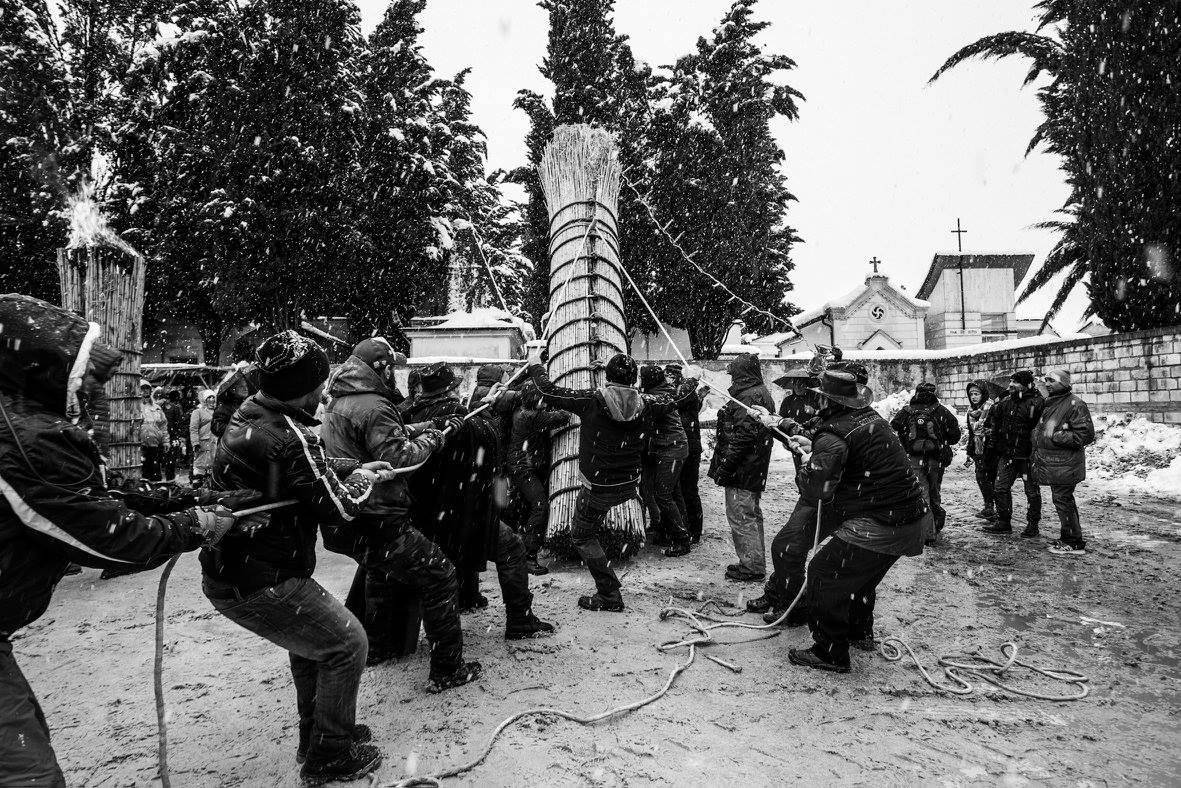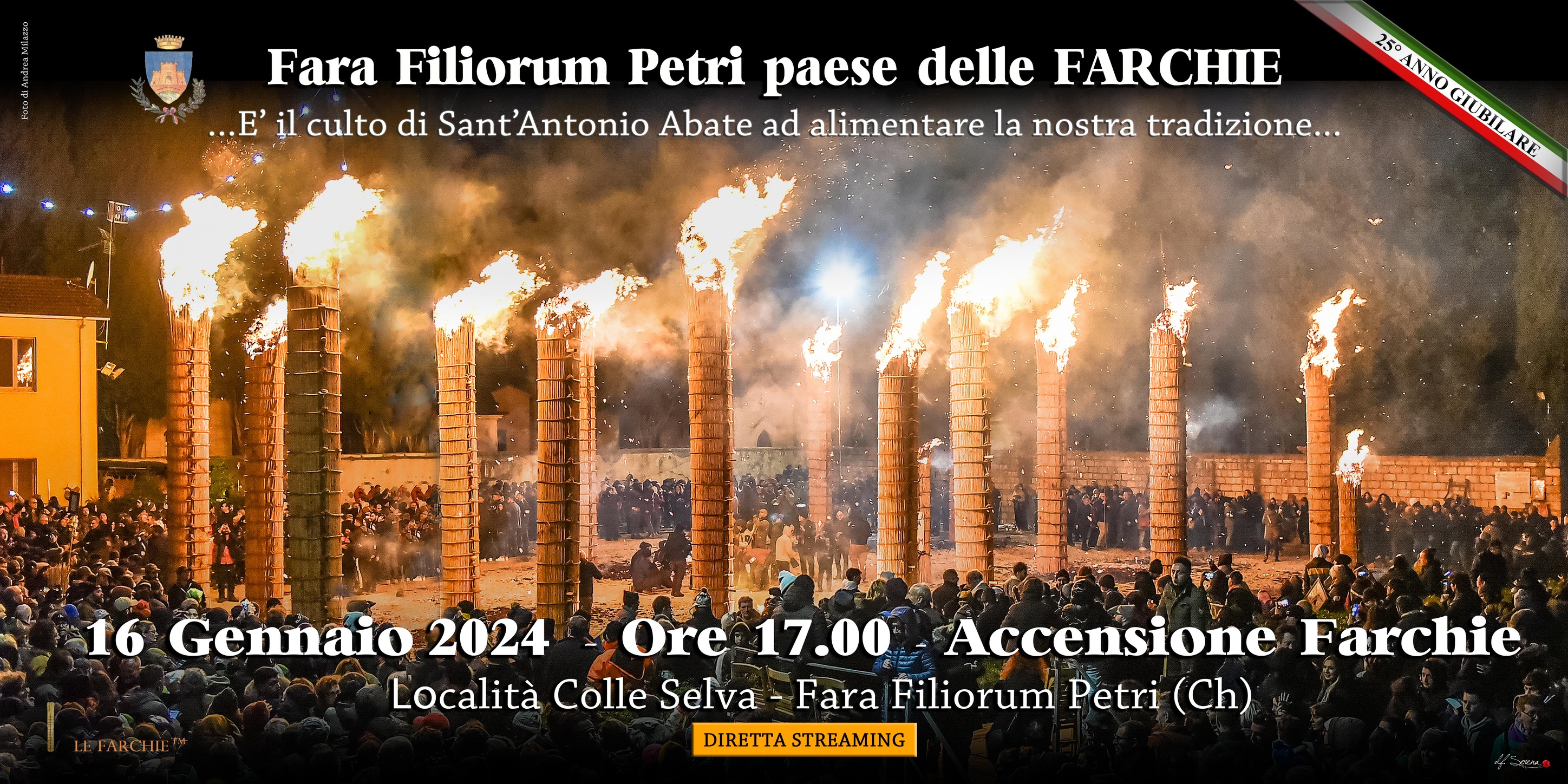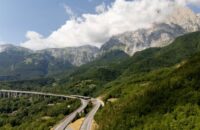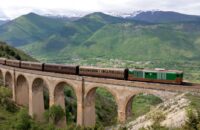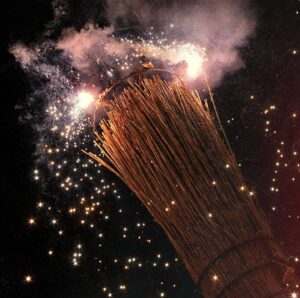 A Fara Filiorum Petri(LaFarë in local dialect), a small town at the gateway to Majella National Park in the valley of the Foro River, January’s St. Anthony is celebrated with “farchie.”
A Fara Filiorum Petri(LaFarë in local dialect), a small town at the gateway to Majella National Park in the valley of the Foro River, January’s St. Anthony is celebrated with “farchie.”
For this year, the event is renewed in a special guise to mark the 25th jubilee year. In fact, over time the idea matured to light the Farchie every 25 years in the Colle Selva district where, more than 200 years ago, the miracle that gave rise to the rite occurred. They were brought there in 1899, 1925 , 1949, 1974 and 1999.
At sunset, on January 16 each year, for the traditional feast of St. Anthony Abbot, the tops of farchie, cylindrical bundles of reeds tied with red willow branches, up to 10 meters high, are raised and set on fire with firecrackers. Like large flashlights, with flames fluttering overhead, they dye the sky fiery red , giving the public a unique spectacle wrapped in a magical atmosphere.
This folkloric festival originates from the belief that the saint would protect Fara from the invasion of French troops in 1799 by setting fire to the oak trees surrounding the village. At the time, Fara was protected by a large oak grove in which St. Anthony appeared in the guise of a general who ordered the French troops to stop and not to cross the forest. At their refusal he turned the trees into immense flames that made the soldiers beat a retreat.
But the Farchie are not just folklore, they are something more, deeper, where collaboration and community spirit contribute to a magical atmosphere. The Farchie are experienced night and day for a week in every district of the village. The farmyards, clearings or glades are designated for their preparation although, to prevent the reeds from getting wet, they are protected by stands or tarps.
As early as early January, the contrade of Fara each prepare their own farchia and the women cook traditional Abruzzo dishes. The whole festival is centered on hospitality, so there is absolutely no charge. Once completed, on Jan. 16, they are transported by decorated tractors to the square in front of the church of St. Anthony Abbot. An organplayer also known as a “trevucette” straddles the farchia while a drummer leads the procession. The contradaioli unload the farchia by resting it on the ground and at the command of the ringleader raise it and at sunset it is lit.
At the end of the festivities, the best farchia is recognized. According to the participants, technical perfection comes to light only after it has been raised. Verticality, the right alignment of the knots, and the correct arrangement of the rods to avoid bulging or twisting are the main requirements of right mastery in farchia construction, put in relation to their size.
A dialect stornello proudly recalls the events of 1799, when little Fara repelled the assault of the revolutionary army that had already taken all the surrounding towns:
“La Huardie l’huardie l’han brusciate
Ursogne svreugnate
La Fare tante stretto
Ha ammazzate lu picchette.”
The French burned Guardiagrele, conquered Orsogna without a fight while Fara tanto piccola killed the picket.
